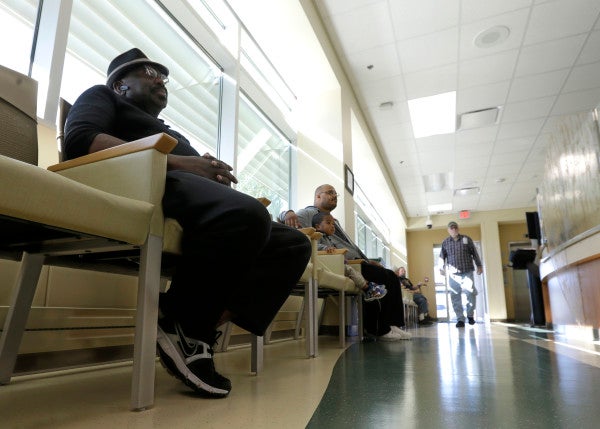Give Veterans Greater Access To Quality Care, Not Health Care Credit Cards
When faced with something as complex as ensuring veterans have timely access to the health care they need, it’s always...

When faced with something as complex as ensuring veterans have timely access to the health care they need, it’s always dangerous to gravitate toward simple-sounding solutions. That’s certainly the case this election year, as “let the money follow the veteran, instead of funding VA,” has become a popular soundbite on the campaign trail and even on Capitol Hill. Yes, we need to reform veterans health care, but taking money out of the Department of Veterans Affairs and sending it into the private sector is not the cure.
Giving veterans vouchers or plastic cards that they can use to pay for health care wherever they choose may at first glance seem like an attractive idea. Unfortunately, this simplistic idea assumes that veterans will be able to readily access quality care in the private sector whenever and wherever they want. But looking at the widespread problems that continue to plague the current “choice” program — such as scheduling mistakes, veterans getting billed and providers not getting paid — tells a very different story.
The reality is that today’s private-sector providers are not prepared to accept large numbers of new patients without incurring lengthy appointment wait times. They are certainly not ready to take on the care of millions of veterans, particularly those who are severely injured and ill. Nor do most medical personnel working in the private sector have the expertise or experience treating veterans as do the full-time health care professionals working inside VA.
Veterans who are enrolled in the VA health care system present more chronic health conditions than the general population. They need access to primary care physicians that are both knowledgeable about the unique issues facing veterans — men and women who have, for example, been exposed to Agent Orange in Vietnam or burn pits in Iraq — and have the time to dedicate to their care. That’s simply not the case in the private sector where scheduling patients every 15 minutes is the norm, and doctors and patients alike complain about the rush of care. At the VA, on the other hand, patient load is managed in such a way that clinicians are able to spend more time actually listening to and caring for veterans. Research has shown that patients at VA facilities are much more likely to be screened for many serious chronic conditions and illnesses, including diabetes and high blood pressure, or to receive preventative medicine, such as flu shots, than in the private sector.
Furthermore, giving veterans vouchers or plastic cards to purchase their care in the community will lead to poorer, not better, health outcomes because care will become more fragmented and less coordinated. More veterans, especially those with coexisting chronic health conditions, will be subjected to overtreatment or undertreatment, as no one entity will be held accountable for ensuring the continuity of care veterans receive from various facilities and clinics is appropriate and properly integrated.
And then there’s the cost — something not typically mentioned when activists or politicians trumpet “choice” as the solution — which could be as high as $50 billion in new federal spending according to Congressional Budget Office estimates. Does anyone truly believe that Congress will give veterans a brand new $50 billion health care entitlement without cutting a comparable sum from the current VA health care system?
Related: The solution to VA reform isn’t the private sector »
Instead of taking the seemingly easy route by offering veterans vouchers or plastic cards, let’s do what is really needed to ensure that all veterans who require treatment can access the care they need. After all, look beyond the headlines and you will find that access is the real problem, not quality — the overall VA health care system has been independently assessed numerous times as equal to or better than the private sector on most health care measures.
Veterans deserve more than the hollow “choice” vouchers and plastic cards would offer. Rather, they should be empowered to seek the right course of treatment, free from bureaucratic middlemen. Congress should eliminate arbitrary access standards like the current 30-day wait time and 40-mile distance from a VA facility, and instead allow veterans and their doctors to make the appropriate health care decisions based on clinical factors. To increase access, the VA needs to establish coordinated veterans health care networks that seamlessly integrate community care into an improved VA system. This will create local networks offering new options to ensure veterans get quality health care, when and where they need it. That would be real reform — when veterans and their doctors can choose the best care available in their community, either at VA or, if needed, at a community provider.